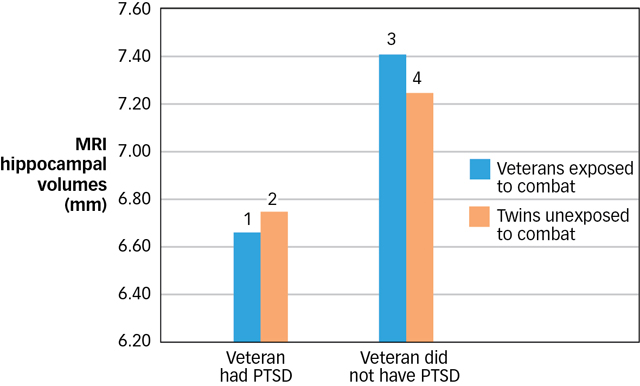15.4 Post-traumatic Stress Disorder: Troubles after a Trauma
Psychological reactions to stress can lead to stress disorders. For example, a person who lives through a terrifying and uncontrollable experience may develop post-traumatic stress disorder (PTSD), a disorder characterized by chronic physiological arousal, recurrent unwanted thoughts or images of the trauma, and avoidance of things that call the traumatic event to mind.

Psychological scars left by traumatic events are nowhere more apparent than in war. Many soldiers returning from combat experience symptoms of PTSD, including flashbacks of battle, exaggerated anxiety and startle reactions, and even medical conditions that do not arise from physical damage (e.g., paralysis or chronic fatigue). Most of these symptoms are normal, appropriate responses to horrifying events, and for most people, the symptoms subside with time. In PTSD, the symptoms can last much longer. It is estimated that approximately 1 in 20 Canadian soldiers returning from Afghanistan met the criteria for PTSD. This rate is probably too low since there is stigma in the Canadian military about seeking help for symptoms (Howell, 2011). The observed rates of PTSD are even higher in non-
What structure in the brain might be an indicator for susceptibility to PTSD?
Not everyone who is exposed to a traumatic event develops PTSD, suggesting that people differ in their degree of sensitivity to trauma. Research using brain imaging techniques to examine brain structure and function has identified important neural correlates of PTSD. Specifically, those with PTSD show heightened activity in the amygdala (a region associated with the evaluation of threatening information and fear conditioning), decreased activity in the medial prefrontal cortex (a region important in the extinction of fear conditioning), and a smaller sized hippocampus (the part of the brain most linked with memory, as described in the Neuroscience and Behaviour, and Memory chapters) (Shin, Rauch, & Pitman, 2006). Of course, an important question is whether people whose brains have these characteristics are at greater risk for PTSD if traumatized, or if these are the consequences of trauma in some people. For instance, does reduced hippocampal volume reflect a pre-

 Figure 15.1: Hippocampal Volumes of War Veterans and Their Identical Twins Average hippocampal volumes for four groups of participants: (1) combat-
Figure 15.1: Hippocampal Volumes of War Veterans and Their Identical Twins Average hippocampal volumes for four groups of participants: (1) combat-Terrifying, life-
threatening events, such as combat experience or rape, can lead to the development of post- traumatic stress disorder (PTSD) in which a person experiences chronic physiological arousal, unwanted thoughts or images of the event, and avoidance of things that remind the person of the event.